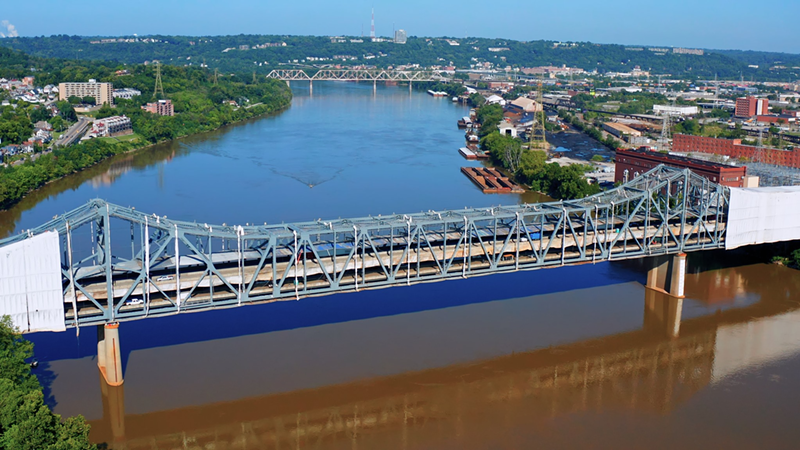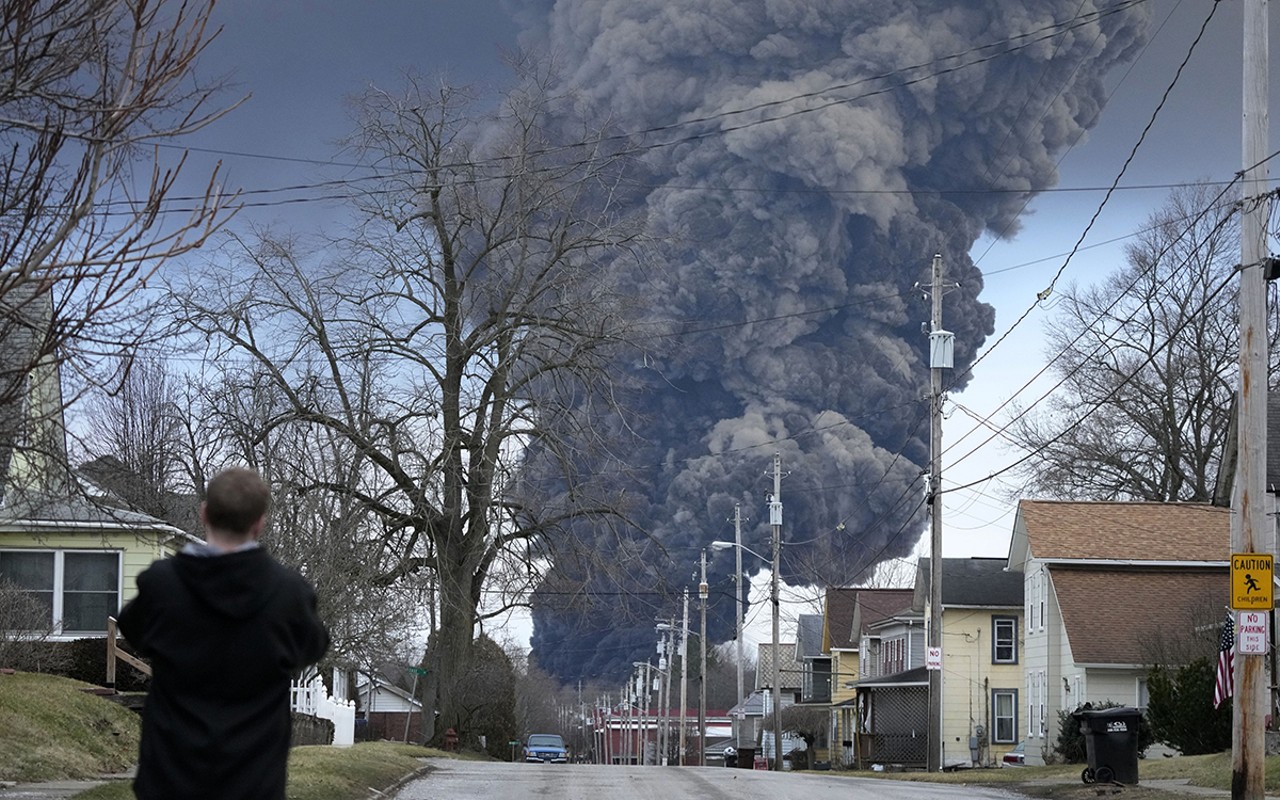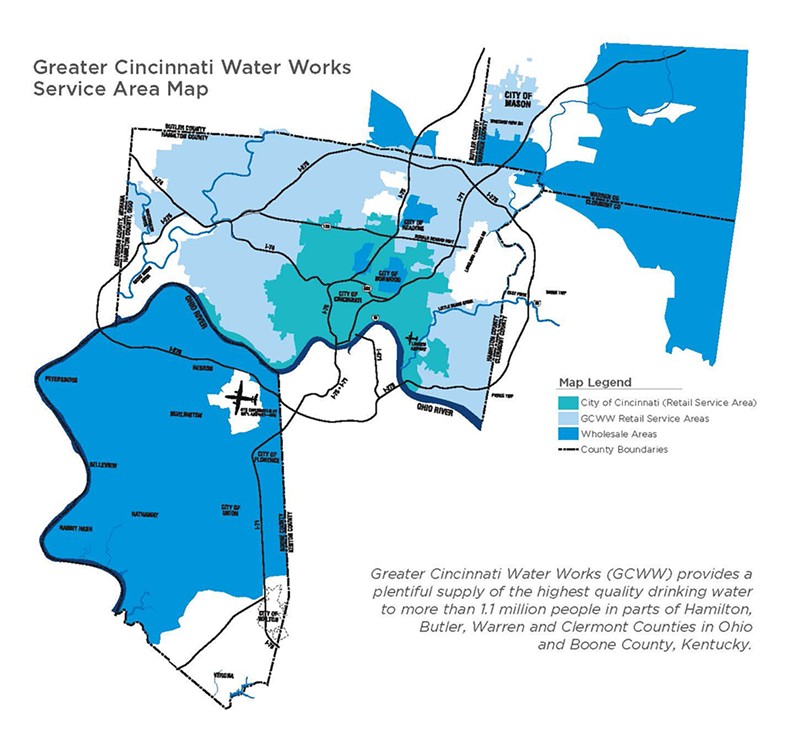
Photo: facebook.com/BrentSpenceInfo
Greater Cincinnati Water Works said only one chemical from the East Palestine Disaster has been detected about 220 miles upstream from Cincinnati, and it won’t be enough to harm the health of those who consume tap water.
Water containing a hazardous chemical from the disastrous Norfolk Southern train explosion in East Palestine, Ohio is expected to reach the Greater Cincinnati Area in a matter of days, according to an announcement from Greater Cincinnati Water Works (GCWW), but officials tell CityBeat it won’t be enough to be harmful.
On Wednesday, Feb. 15, GCWW released a statement online saying the department had tested water from the Ohio River and “did not detect the presence of any hazardous chemicals involved in the Feb. 3 incident.”
However, an update posted to the GCWW site later in the day on Feb. 15 said the agency expects the contaminated water to reach the Greater Cincinnati area sometime this weekend.
“GCWW continues to work with federal, state, and regional partners to track the spill, which is expected to arrive in the Cincinnati area early next week, on approximately the afternoon of Sunday, February 19,” the agency wrote. “This date is subject to modifications, based on changing river conditions. GCWW will continue to update this information regularly.”
The chemicals emanating from the Feb. 3 disaster in East Palestine include butyl acrylate, vinyl chloride, ethylene glycol monobutyl ether, and ethylhexyl acrylate. The chemicals are used in industrial processes including the production of lacquers, enamels, inks, adhesives, paint thinners and industrial cleaners, and plastic manufacturing. The colorless vinyl chloride has been associated with an increased risk of liver cancer and other cancers, according to the federal government’s National Cancer Institute.
Jeff Swertfeger, superintendent of water quality at Greater Cincinnati Water Works, said only one chemical has been detected about 220 miles upstream from Cincinnati, and it won’t be enough to harm the health of those who consume tap water.
“One compound called butyl acrylate has been found in the Ohio River,” he tells CityBeat. “Just to put things into perspective, the highest level that I’ve seen in the river when it first entered was four parts per billion, right now the highest levels we’re seeing in the river are somewhere between two and three parts per billion. We expect that number to go even lower by the time it gets to us.”
Swertfeger said GCWW is taking guidance from the Agency for Toxic Substances and Disease Registry (ATSDR), who has released a provisional health guidance on the chemicals associated with the explosion in East Palestine.
"This is a level at which they say there could be possible health effects for this chemical; they said that level would be 560 parts per billion, so that compared with what we’re seeing in the river at the highest peak was four, so we’re well below that health effect level,” he said.
Still, Swertfeger said GCWW is exercising added caution about any level of butyl acrylate in the water supply. The agency plans to shut off access to the GCWW reserve once the butyl acrylate reaches the Cincinnati area to let it pass through the Ohio River and continue to dilute. While the access is shut off, GCWW will use its reserves to continue water service for the area, which Swertfeger said won’t result in any shutoffs.
GCWW services 1.1 million customers in parts of Southwest Ohio and Northern Kentucky, as seen on the map below.
Swertfeger said water will still be treated for the butyl acrylate once the reserves are reopened.
“We’ve done a lot of laboratory work over the weekend and this week to look at our treatment process. There’s a lot we can do, there are several treatment processes in here that will remove it.”
Beyond water, there have been other environmental concerns after the toxic outbreak, including air and soil quality.
“We’ve done a lot of laboratory work over the weekend and this week to look at our treatment process. There’s a lot we can do, there are several treatment processes in here that will remove it.”
Beyond water, there have been other environmental concerns after the toxic outbreak, including air and soil quality.
East Palestine residents are experiencing skin rashes, nausea, burning eyes and other symptoms after the explosion of toxic materials, and some have started to meet with scientists and sign up for independent soil and water testing for their homes.
Follow CityBeat's staff news writer Madeline Fening on Twitter and Instagram.
Coming soon: CityBeat Daily newsletter. We’ll send you a handful of interesting Cincinnati stories every morning. Subscribe now to not miss a thing.
Follow us: Google News | NewsBreak | Reddit | Instagram | Facebook | Twitter




